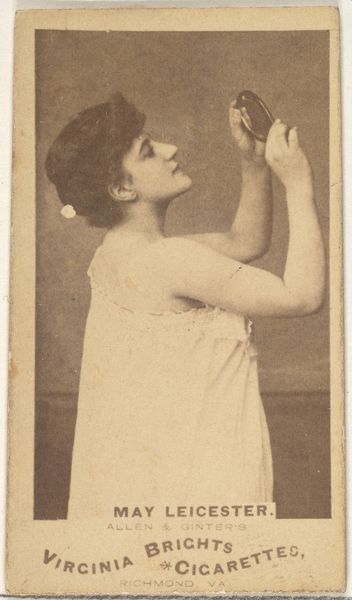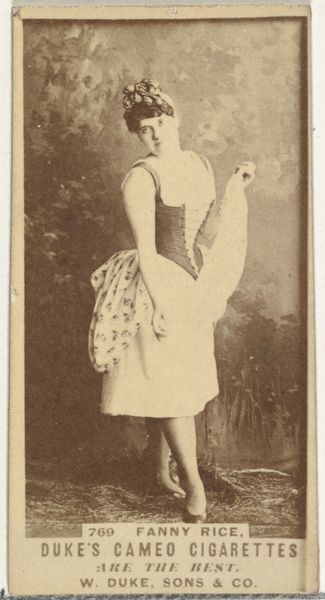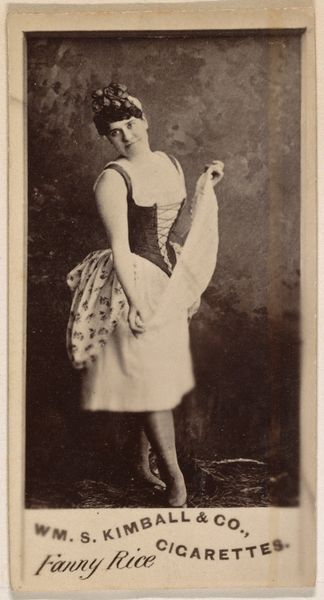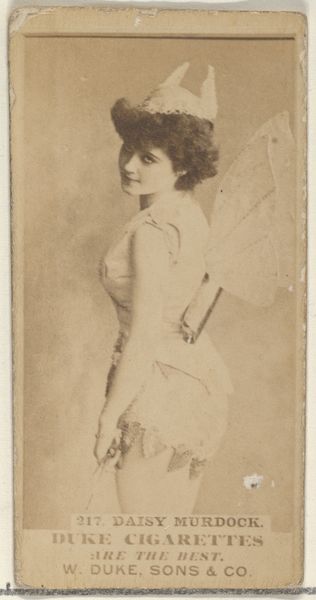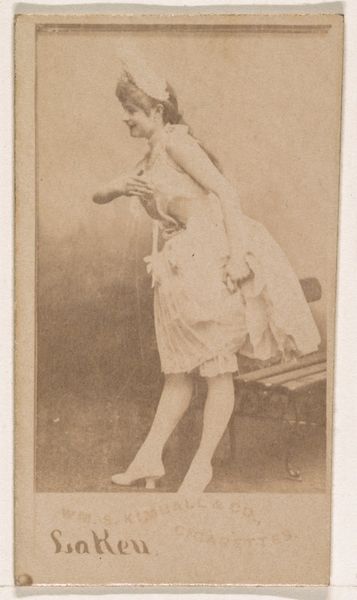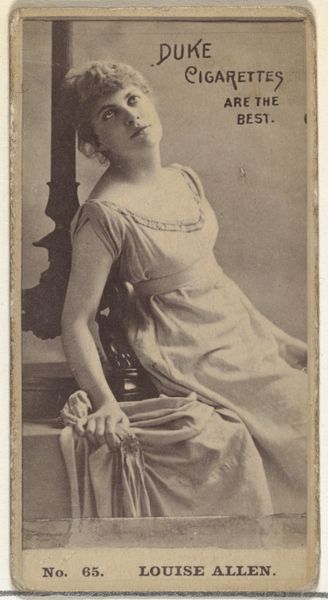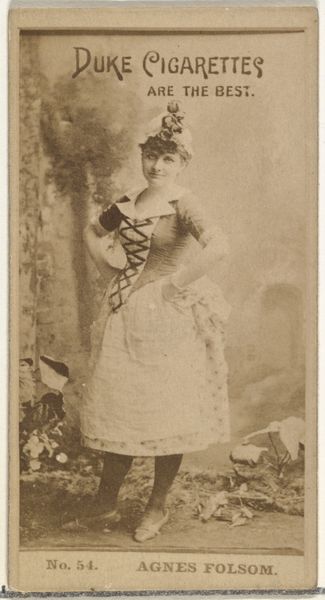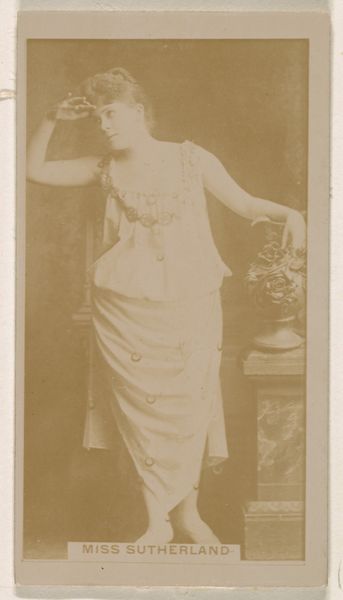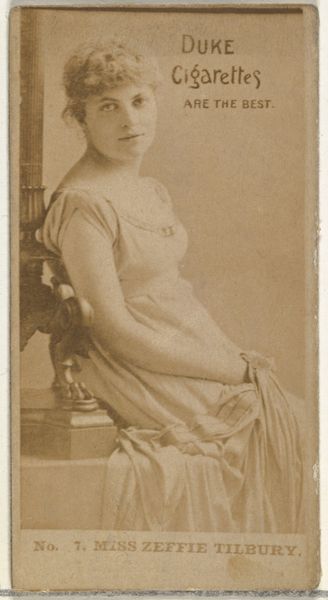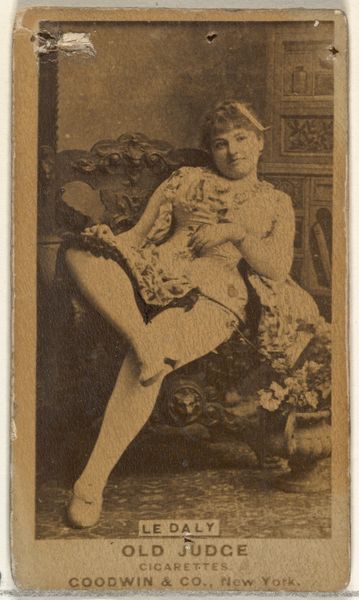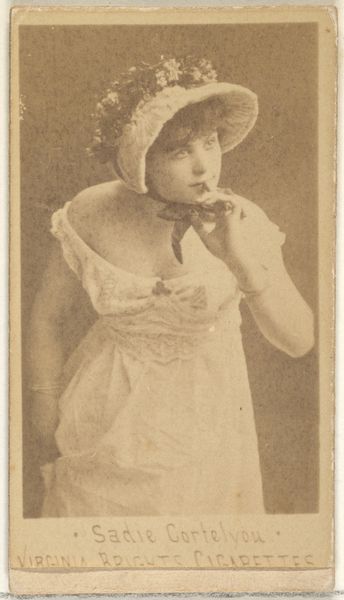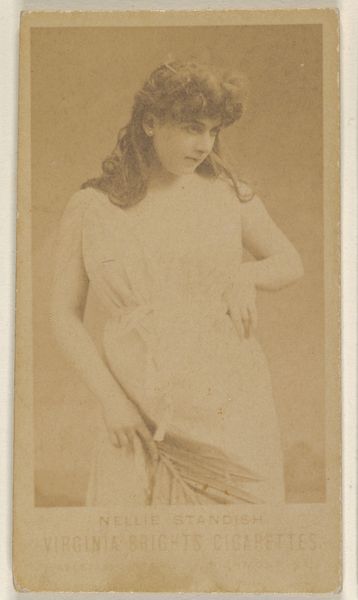
Card Number 88, Miss Leicester, from the Actors and Actresses series (N145-1) issued by Duke Sons & Co. to promote Cross Cut Cigarettes 1880s
0:00
0:00
print, photography
#
portrait
#
pictorialism
# print
#
figuration
#
photography
#
historical photography
#
orientalism
#
19th century
#
genre-painting
#
academic-art
Dimensions: Sheet: 2 1/2 × 1 3/8 in. (6.4 × 3.5 cm)
Copyright: Public Domain
Curator: This is card number 88, "Miss Leicester," one of the "Actors and Actresses" series produced by W. Duke, Sons & Co. in the 1880s as a promotional item for Cross Cut Cigarettes. It’s currently held at the Metropolitan Museum of Art. Editor: It's incredibly subtle for something meant to catch your eye. The soft sepia tones give it an intimate feel, almost like a stolen moment rather than blatant advertising. Curator: Indeed. We have to remember how these images circulated and the power they held. Tobacco cards, inserted into cigarette packs, democratized image consumption, bringing idealized depictions of performers like Miss Leicester to a wider public. Consider the Victorian obsession with collecting and displaying these—a public performance even within domestic spaces. Editor: And these images clearly functioned within existing structures of power. Miss Leicester, framed as an object of beauty and aspiration, reflects Victorian ideals of womanhood and reinforces class distinctions, not unlike contemporaneous magazine covers. We also can’t ignore how deeply these products are rooted in the history of colonization and the exploitation of labor. Curator: Precisely. The seemingly innocent portraiture becomes quite complex when you examine it through a socio-political lens. Her gaze, directed into the mirror, is suggestive, yes, but the image as a commodity reflects anxieties around female visibility and control within a rapidly changing public sphere. What narratives were enabled by these cards, and conversely, which were actively suppressed? Editor: And what did it *mean* for actors and actresses to be part of this branding effort, consciously or unconsciously contributing to a culture so dependent on harmful substances? The interplay between entertainment, industry, and personal reputation must have been complicated. What freedoms or creative opportunities were enabled in return for lending one's likeness? Curator: Absolutely. By viewing Miss Leicester as not merely a pretty face, but as an active participant, albeit within prescribed societal limits, we are able to glean far richer readings of Victorian culture. It prompts a deeper excavation into representation, commercialization, and individual agency. Editor: It’s striking to realize how much these small artifacts encapsulate. Beyond being collectible items, they mirror and participate in shaping societal attitudes on celebrity, consumerism, and even empire. They were the influencers of their time. Curator: Thinking about this image in that context truly illuminates the layers of history compressed within. Thanks for helping me think this through.
Comments
No comments
Be the first to comment and join the conversation on the ultimate creative platform.

